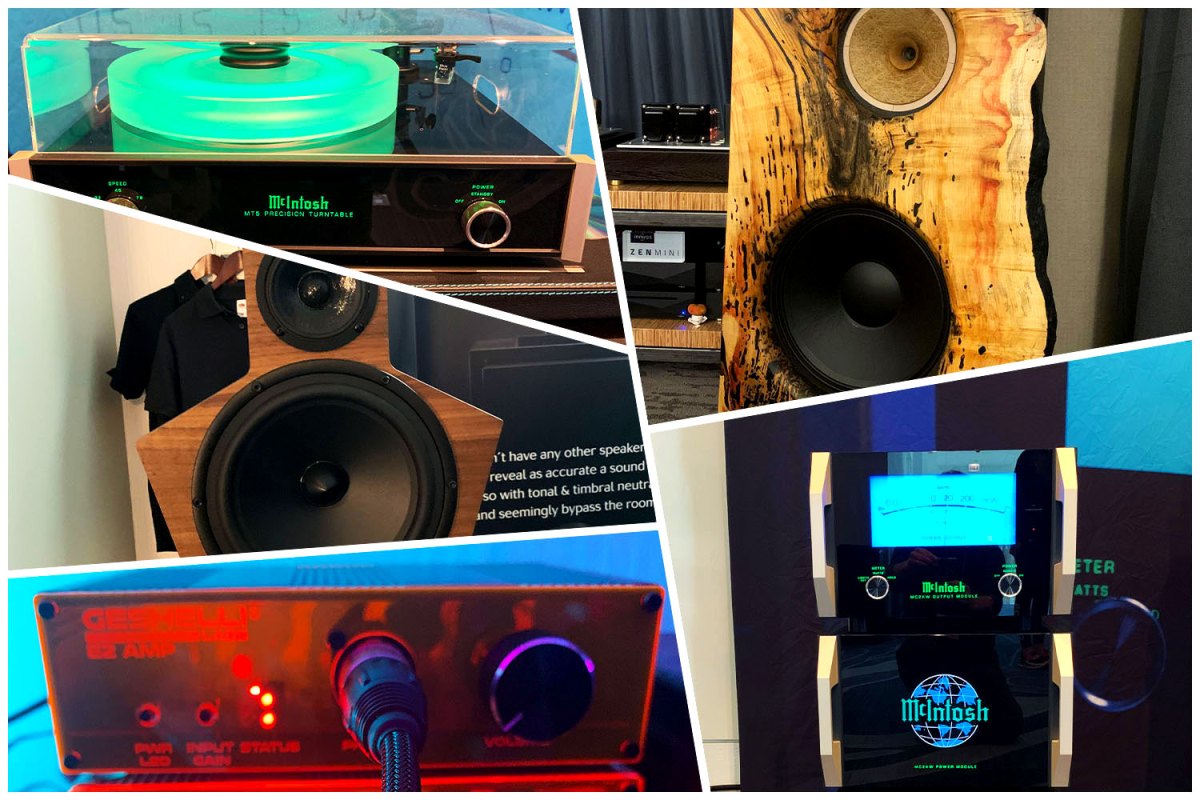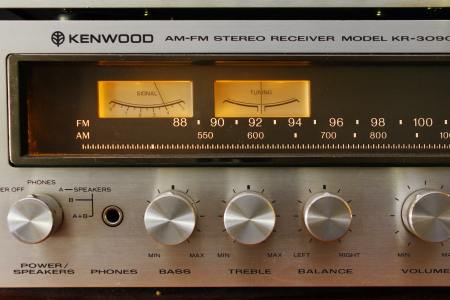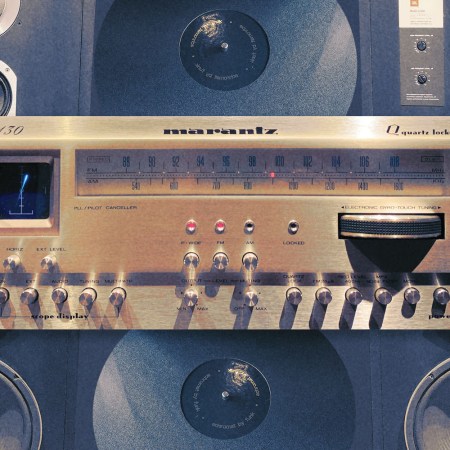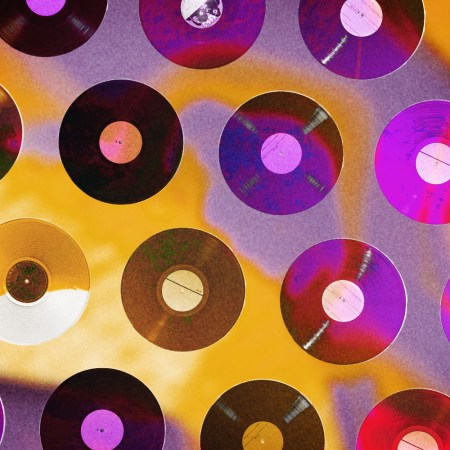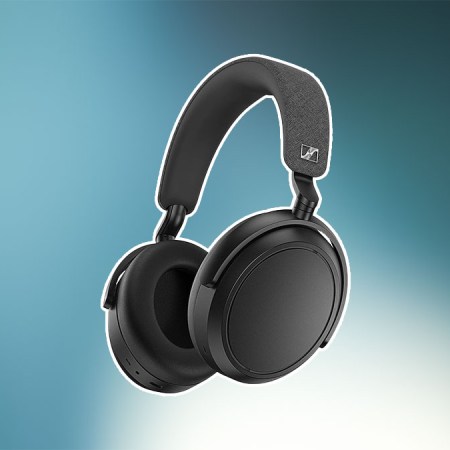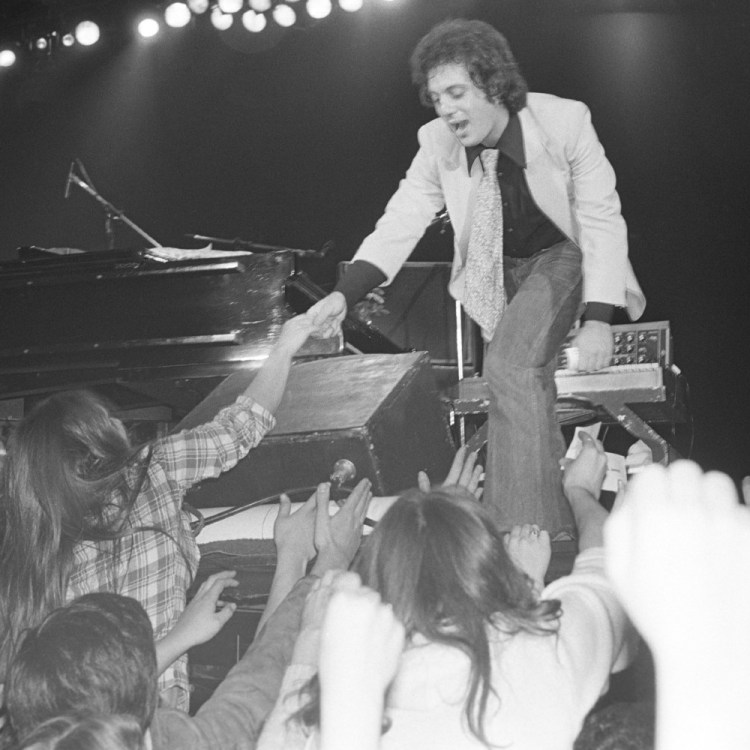It’s an idea so preposterous that, had I not experienced it last weekend, I could be forgiven for thinking it all a dream. Imagine this: all the top manufacturers of high-end audio equipment from around the world have taken over a hotel. In each room, they’ve set up a curated hi-fi system. Turntables and streaming servers are hooked into all manner of speakers. Sound baffles line the walls and windows are covered to reduce unwanted echo. Power is cleaned up and delivered through cables engineered to deliver pure electrical current.
There are hundreds of these rooms and, for the price of admission, you are free to wander into any or all of them, request songs, and sit back like the bloke in that classic Maxell ad from years back. The one with his hair blown back and Martini glass toppling toward him on his end table. In the ballroom are hundreds of headphones and small, sexy-looking amplifiers connected to high def streaming services. Down the hall is a record fair teeming with experts who can describe how to best clean vinyl or patch in the finest RCA cables or loudspeaker wires. When you consider the amount of energy, time, intellect, passion, sweat and treasure that’s been poured into the entirety of the experience you can think only one thing: music is one of the most powerful forces on earth.
The event is the annual show known as AXPONA, or the Audio Expo of North America. It’s the largest high-end Stateside show of its kind, held in mid April in Schaumburg, Illinois, just outside of Chicago. If you weren’t fortunate enough to attend the 2023 exhibition, this piece will provide an overview of the experience that touches on some of the trends you can expect as a consumer and some of the more interesting products on display.
A Few Notes From the Experts to Set the Stage
As a newcomer, I figured the best approach was to quickly absorb some of the wisdom of the keynote addresses and talks being given at the convention center. A few minutes listening to Besflores Nievera Jr., the brand ambassador for the retailer Music Direct, served as an excellent frame for the weekend to come. He made the point that, while we were going to see and hear all kinds of technical innovation and breakthrough products, at the end of the day it’s about “music first.” It’s about joy above all, and sharing, and that’s the reason for all the hoopla. So while you might be staring down the luminescent VU meters on a $300,000 system or quaking before speakers that are taller than you are, remember why you’re there in the first place. The author Garrett Hongo, who penned the story of his own love affair with high-end audio in the book The Perfect Sound: A Memoir in Audio, injected similar notes when he joked several times about being “a sick man” who’d spent his life pursuing the feeling he had at La Scala when he was moved to tears in younger years. When asked how he’d afforded so many expensive systems, he noted that he drives a 2002 Camry. To be sure, many of these products are simply out of the reach of financial mortals. But he’s not wrong that it’s also about choices.
For AXPONA VP and Event Director Liz Smith, the show is about ensuring that the consumer focus shifts back to audio quality after years of drifting toward smaller and smaller devices.
“I think right now with audio we’re at a phase where we’re trying to bring in the next wave of listeners,” she says. “HDTV came out and people were like, ‘I get it.’ And people wanted to watch their movies and sports in high definition. For whatever reason, on the music side, it kind of got lost. Everyone got excited about smaller and more compact, and now we have to educate people that you can listen to music in high definition. You can listen to it and have it sound so much better than a compressed MP3.”
Filtering Out Trends From the Noise
According to Smith, who’s been heading up the show for the past eight years, there are some noticeable trends this year. One of those is what the industry is calling “affordable excellence,” products that are a few hundred to a few thousand dollars. It’s about being able to put together a system for a price “you can wrap your brain around.” Aesthetics are in the spotlight too, with “mid century vintage designs coming through.” She points out that Focal, Klipsch, and KLH all have bookshelf speakers with a vintage vibe. “The headphones are like art; they’re beautiful. There are open-back headphones [rather than noise canceling – which can have resonances or frequency build up]. Streaming is big. A lot of vendors are exhibiting with Qobuz, which is high-quality streaming.”
With her thoughts in mind, I was ready to hit the listening rooms. Before I get too deep into personally calling trends or declaring any top products from the show, I’ll go ahead and put it out there: I’m not a card-carrying audiophile. I have a very nice vintage system (detailed here) and have always had a soft spot for good speakers and a belief in the restorative powers of vinyl. I still swear by my Koss PortaPro headphones that list for about $45. I don’t invest in low-impedance cables or DC blocks or the like. I do trust my ears and my general powers of perception. I spent about eight hours at the conference, where I visited dozens of rooms, followed my nose (and ears) and picked up breadcrumbs of audio intelligence wherever I could find them. My reporting is not intended to be exhaustive nor a buyer’s guide, but rather a survey of some of the products I found fascinating, inspiring, or remarkable in order to set you on your own path of discovery. Some are, to be clear, completely ridiculous. But, as I saw it, that’s part of the fun of going to a show like this. So, that said, let’s get to it.
Should You Buy a Vintage Home Stereo? One Expert Weighs In.
There’s a lot of vintage gear out there right now
The Speakers That Spoke to Me
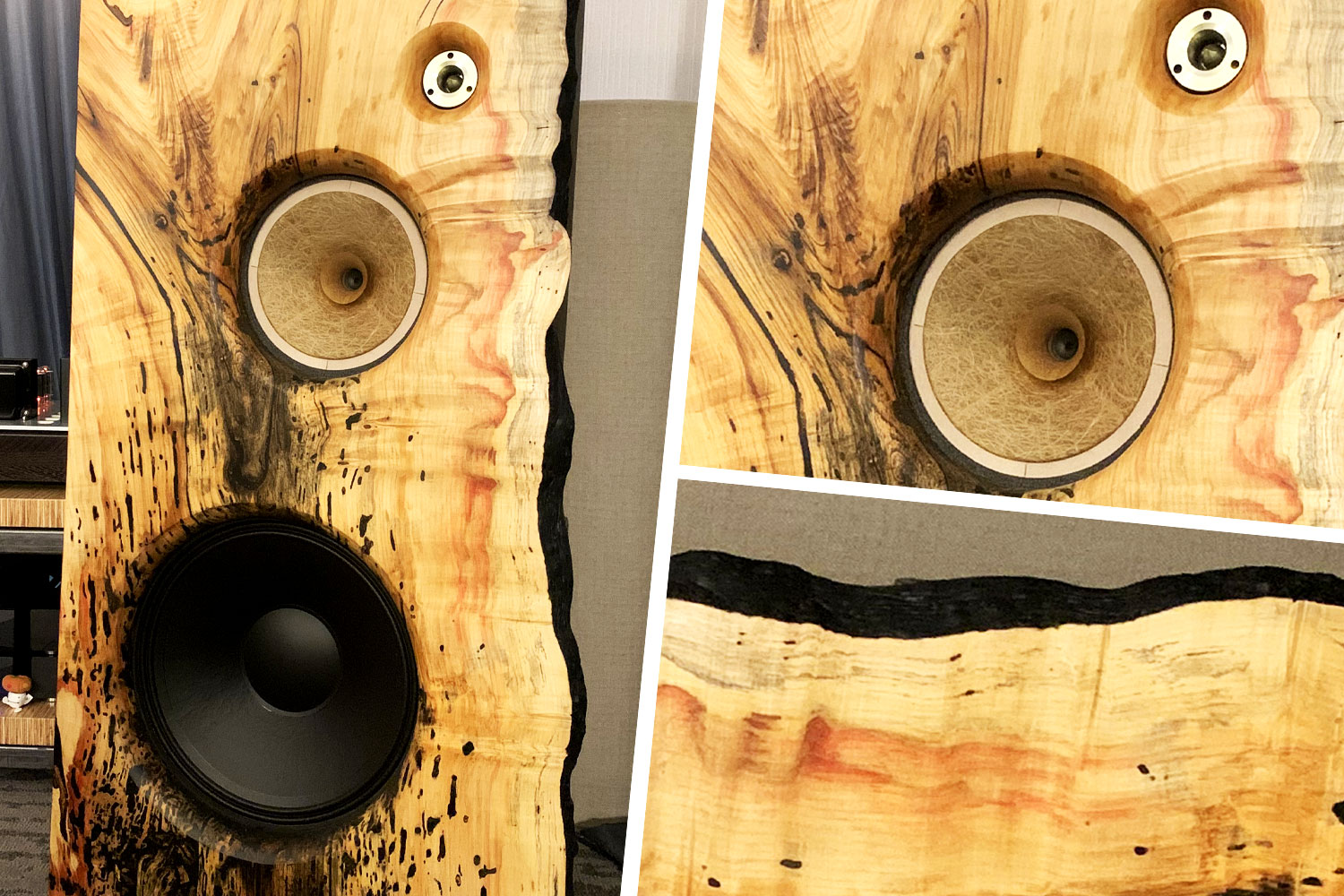
If you’re of a certain age, you might mistakenly think that speakers come in square or rectangle (or really long rectangle) form. It’s clear when it comes to speakers today that much of the artistry is in the physical aesthetics. The variety of materials used and the form factors applied is mind-boggling. From the horn-topped avantgarde acoustic G3 series to the gorgeous and futuristic towers from Devialet to the slab of tree trunks in the Treehaus, the only limit here seems to be the imagination of the designer.
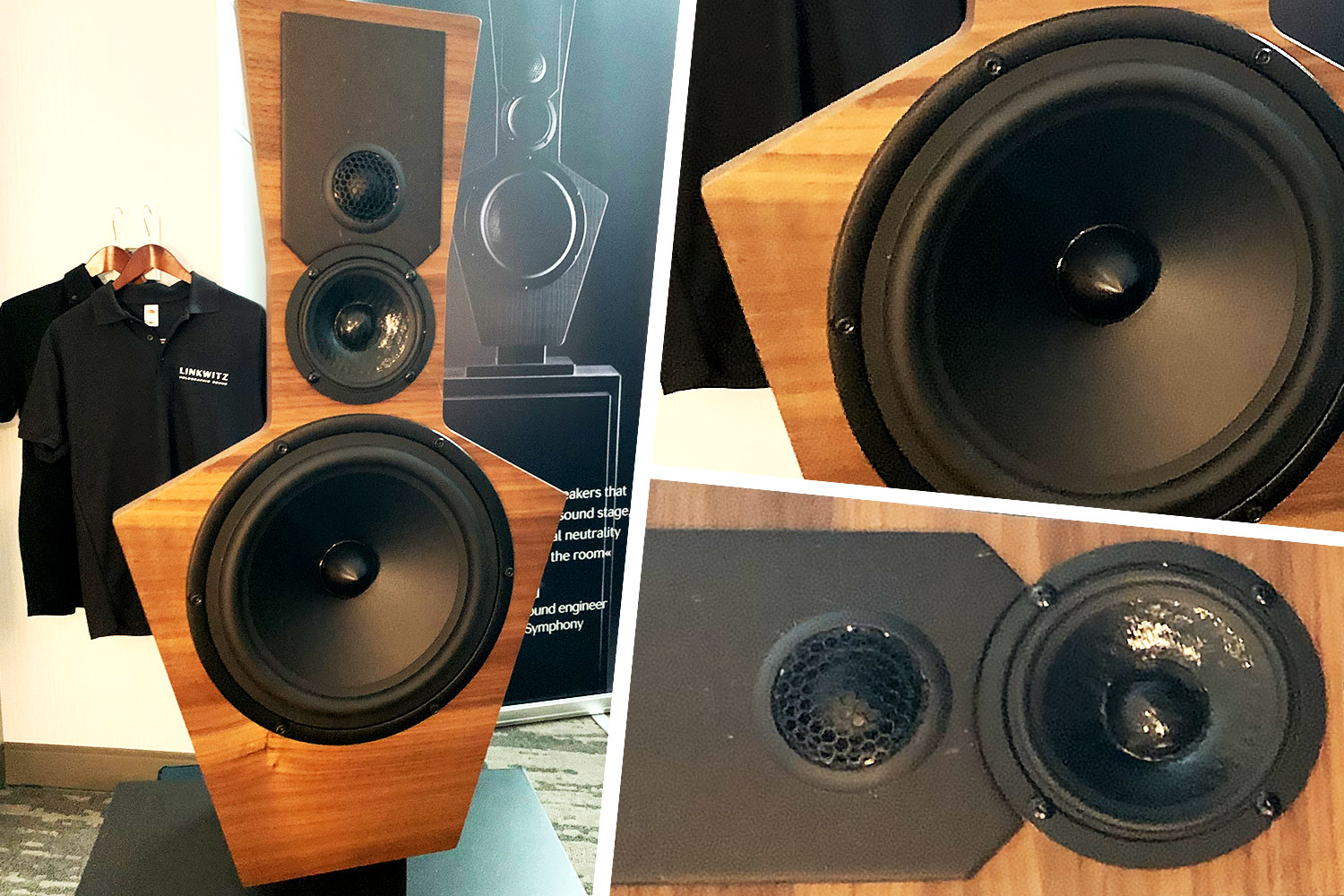
There were three speakers sets that, quite frankly, left my jaw on the floor. The first was the Linkwitz LX521.4MG. There was something special about these speakers from the moment I stepped into the room. They literally stopped me in my tracks, their sound enveloping me entirely. Although I wasn’t under the influence of anything other than coffee, it sounded like the various instruments were floating in the air before me and occupying different spaces within the room. The sound was realistic, but somehow sounded more dimensional than an actual live performance. Staggering.
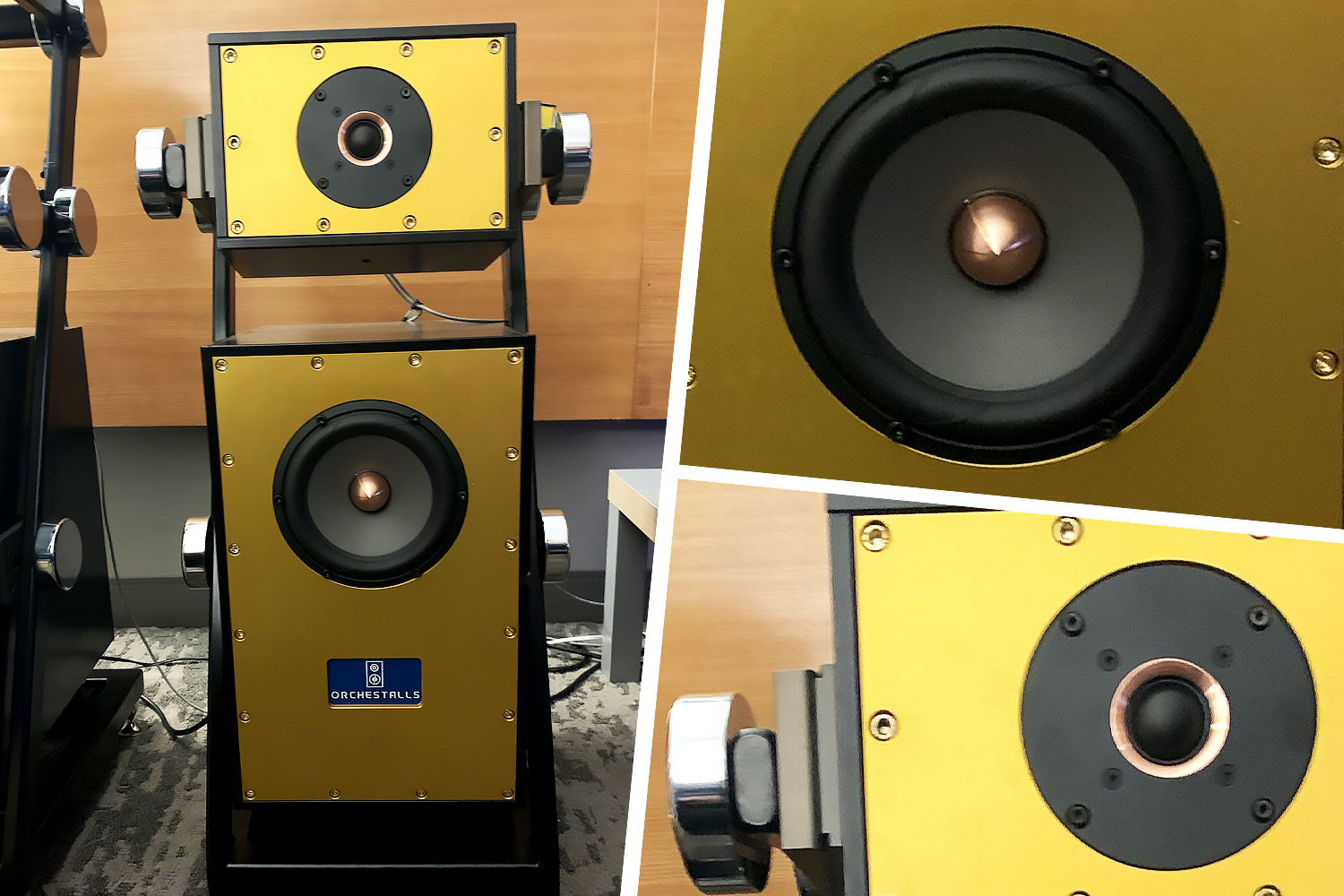
The second set comes from South Korea and looks like something you’d see at a concert hanging from rigging rather than in a living room. The Orchestalls 700R feature individual enclosures that can be manipulated in different directions to change the sonic characteristic of the playback to suit your tastes. The drive units feature gold-plated terminals and injection molded baskets, and the result of all this engineering is a sonic wallop that packs powers and nuance in equal measure.
Full disclosure, the two systems above don’t come cheap. Linkwitz retail for around $18,000-$27,000 a pair, and the Orchestalls about $25,000-$44,000, depending on models and configurations. Clearly, you’ll have to do more than drive an old Camry to enjoy these amazing products. So, I wanted to be sure to include a knockout pair at a more down-to-earth price point. I still rock my dad’s 1960s-era Wharfedales, so I was pleased to discover that their modern counterparts brought a huge smile to my face. The Wharfedale Dovedale retail at about $7,000 a pair (yeah, still not inexpensive) and they’re the biggest speaker in the Heritage line celebrating the UK firm’s 90th anniversary.
It’s worth noting there are some great bookshelf speakers at more human-scale prices, like Klipsch Sevens at $1,299 or the aforementioned Devialet Mania portable at around $790 or Dione sound bar at $2,400.
Combinations That Rocked
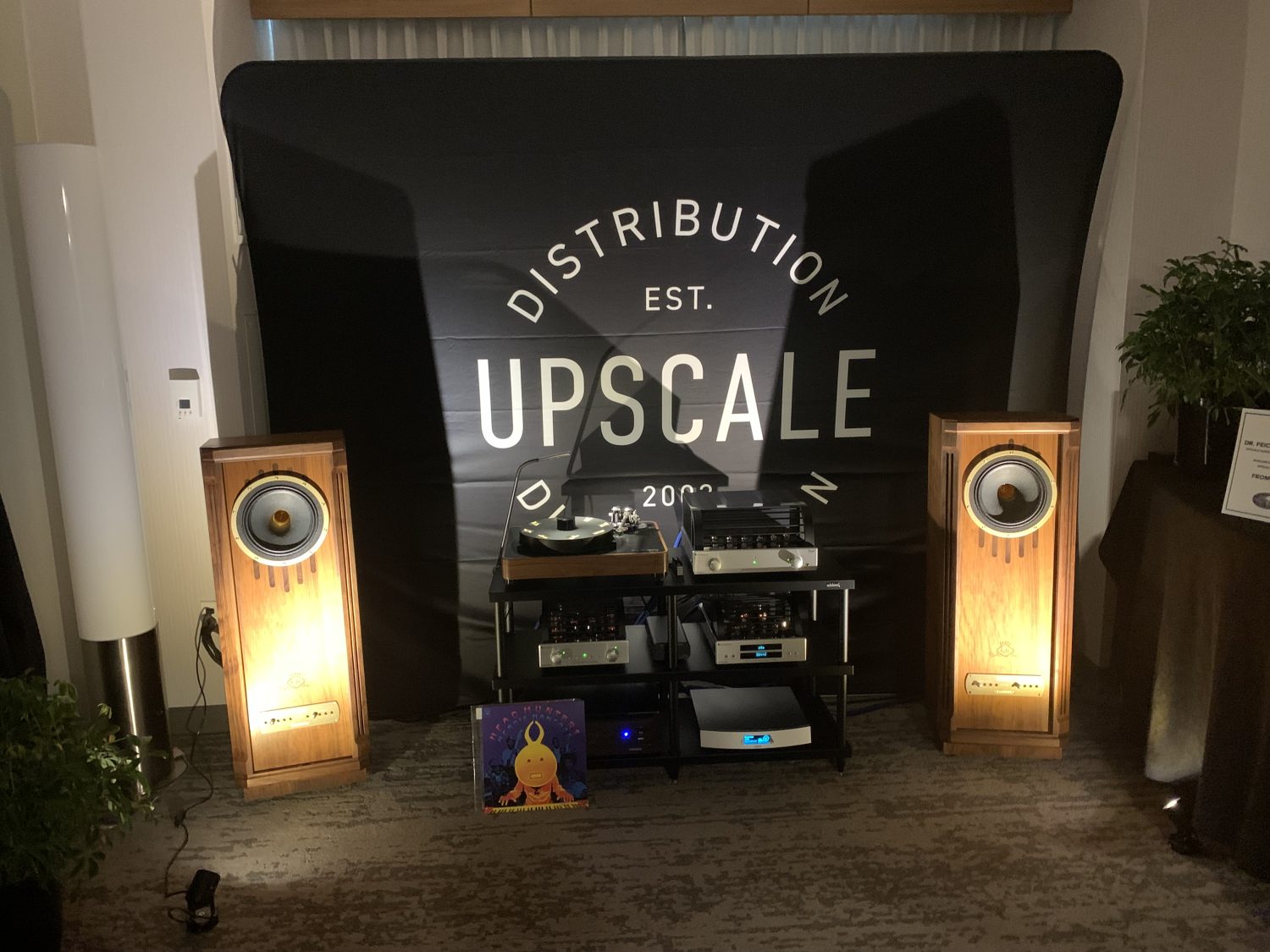
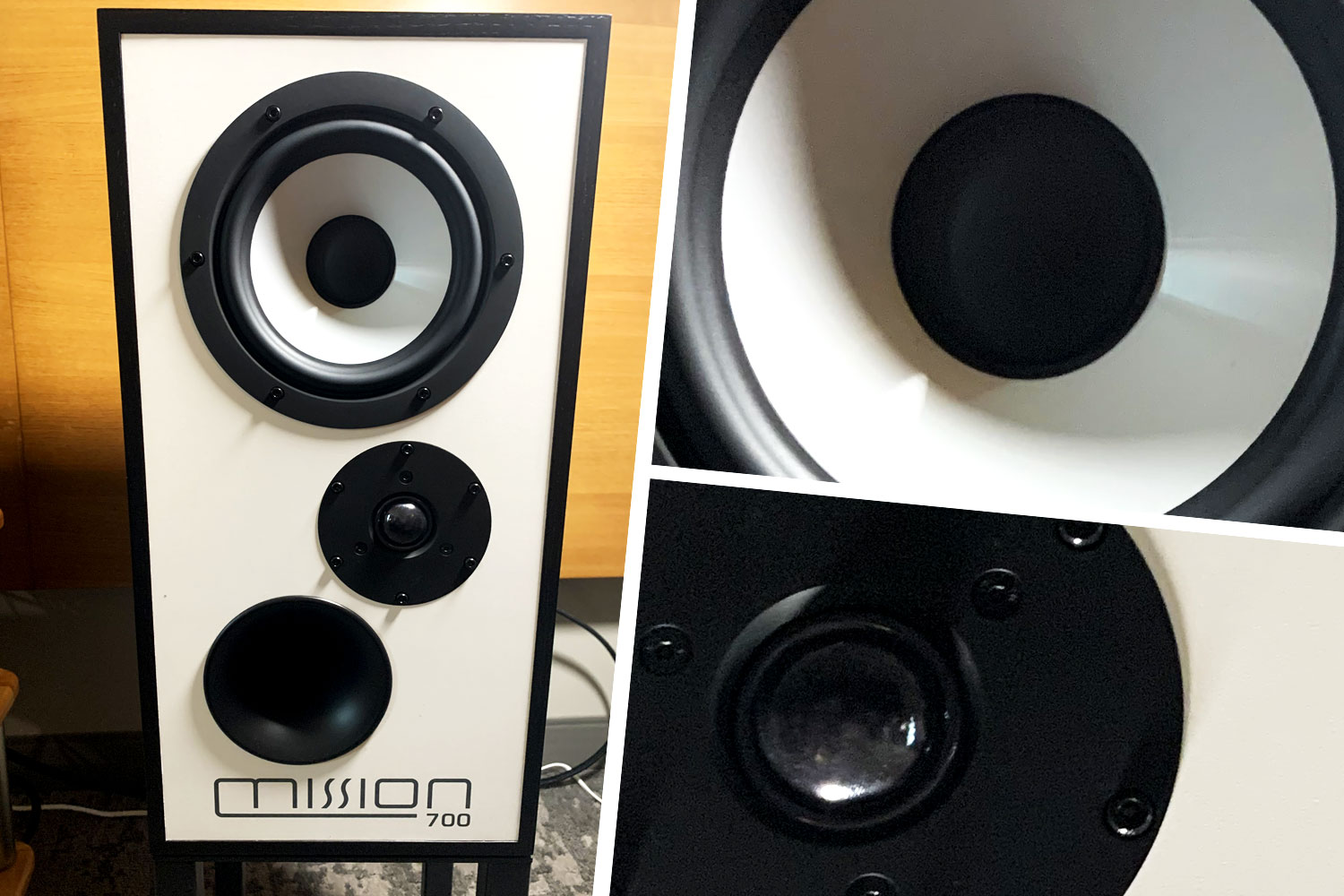
Part of the beauty of component systems is the alchemy involved in how they play together when combined piece by piece. Obviously, it’s a fool’s errand to try to review all the combinations represented at the expo (the permutations are practically endless). But two systems stood out from the pack for me. The first was put together by the team at California’s Upscale Audio. It featured a Dr. Feickert Trio SE turntable (with a Tri-Planar U2 tonearm and Soundsmith Hyperion cartridge) running through a PrimaLuna EVO 100 Phonostage and a PrimaLuna EVO 300 Hybrid Integrated Amp using Cardas interconnects and a AudioQuest Niagara 5000 conditioner anchored by two gorgeous Tannoy Kensington speakers that aesthetically evoked a bygone radio era. Analog manager Kat Ourlian was spinning a record by Morphine that filled the room with controlled reverberations that washed over the listener like waves. I’m not even a Morphine fan, but I could have listened until that platter wore itself out. The system’s in the neighborhood of $50,000, so it’s not a surprise that it sounded amazing, but it’s the kind of sound that makes you aspire to pick these pieces up one by one. At the other end of the price spectrum, but equally impressive, was the relatively affordable Audiolab system with Mission M770 speakers. Topped with a Dual CS 618 turntable, it featured a 9000a integrated amplifier and Audiolab DC Block 6. Including the CD transport and stunning retro speaker set it retails in the neighborhood of $11,000. As the salesman in the room said: “You could spend that on cables around here.”
It’s All In Your Head
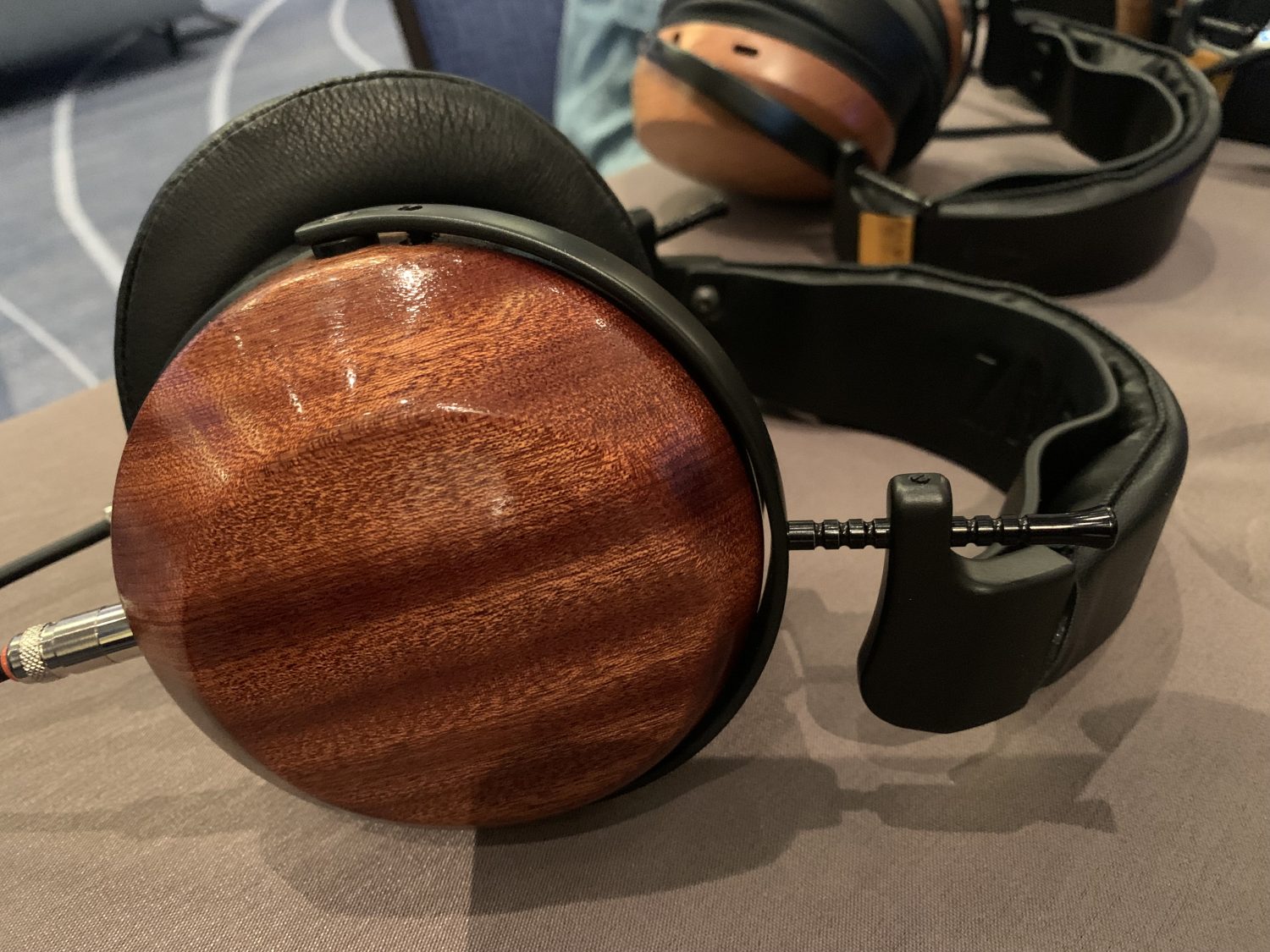
It’s no mystery that headphones have moved from basic utility (have a phone, gotta have earbuds) to a must-have accessory to the core listening unit. At the Ear Gear experience hundreds of headphones were matched with small personal amplifiers and connected to hi def streaming services like Qobuz and Tidal. Some of these amplification boxes connect to your devices, like an iPad or iPhone, and others directly integrate streaming services within them and feature small displays. If your space and your budget are smaller, generally speaking, putting together a system like this is a great way to gain entrance to the high-end audio world. I listened to R.E.M.’s “Fall on Me” through Audeze headphones and an Aries amp and it felt like Peter Buck was literally sitting right next to me plucking away on his Rickenbaker. One of the cool things about all these products is how they make old songs sound new all over again. There are some interesting new entrants in the space as well, including the Florida-based Geshelli headphone amp company and Illinois-based ZMF headphones, which are made with wood and steel and no plastic parts.
Vinyl Stays in the Groove
Once I’d packed my head with enough decibels, I made my way to the convention hall where the Record Fair was in full swing. (In fairness, reel-to-reel tapes and CDs shared table space with the LPs.) Interestingly, amid all the high tech and space-age materials, vinyl is still more than holding its own. Turns out it’s just hard to beat those direct-to-PVC sonic qualities. No digital signal loss here. What you can get, however, is lots of decay from years of fingerprints, dust, grime, and even original pressing plant oils. I met Charles Kirmuss, who’s invented a machine and a technique for cleaning records that’s won accolades across the industry. To test his pitch, I brought along a well-loved copy of the 1977 album Dickey Betts and Great Southern. After about 15 minutes in and out of Kirmuss’ machine, the album picked up 4.3 dB of floor. Impressively, it sounded orders of magnitude fuller and clearer. “We bring breath and emotion to life through the restoration of record grooves,” Kirmuss said, sounding as much like a preacher as a scientist. It was a sentiment shared by many at the audio expo. As another exhibitor said earlier in the day: “We want you to hear the artist, not the equipment.”
And it’s true. There’s a lot to look at and dream about in the world of high-end audio. But all these technologies are just the means to an end. They exist to set the voice of the artist free.
This article appeared in an InsideHook newsletter. Sign up for free to get more on travel, wellness, style, drinking, and culture.
